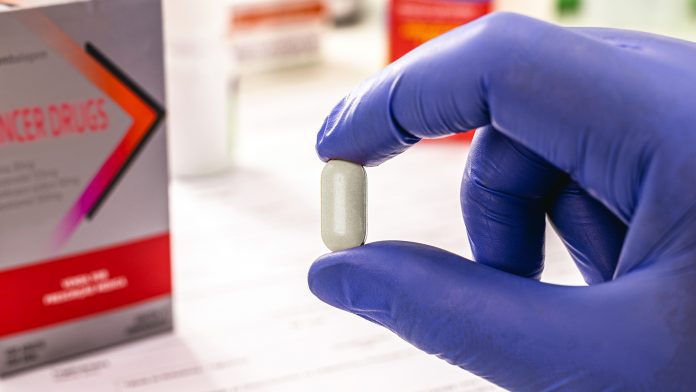
A new study by the Technical University of Denmark utilised reprogramed yeast to produce vinblastine, an essential anti-cancer drug.
In 2019, some cancer patients experienced a stock shortage of anti-cancer drugs vinblastine and vincristine, two essential chemotherapeutic medicines for multiple cancers. There are no alternatives to these anti-cancer drugs as they are derived from the leaves of the Madagascar periwinkle plant, Catharanthus roseus. The plant is common; however, up to 2000kg of dried leaves are required to produce 1g of vinblastine, and this shortage lasted from 2019 to 2021.
An international team of scientists led by DTU researchers genetically engineered yeast to produce vindoline and catharanthine. They also managed to purify and couple the two precursors to form vinblastine, leading to a new, synthetic approach to anti-cancer drugs.
They published their findings in Nature.
Are synthetic anti-cancer drugs the future?
The study is the first to uncover a new supply chain for these important anti-cancer drugs. It also highlights the longest biosynthetic pathway inserted into a microbial cell factory.
Vinblastine belongs to monoterpene indole alkaloids (MIAs). These are very biologically active and useful for treating various diseases, but they are highly complex, causing difficulty with producing them synthetically. The researchers aimed to prove that this was achievable.
“To prove the feasibility of microbial manufacturing of all MIAs, we chose one of the most complex chemicals known to plant chemistry. We did not know the full pathway needed to make vinblastine when we started back in 2015. We are also not aware of the shortages facing society. It was the longest pathway we knew of, and we knew that it likely encoded 30-something enzymatic reactions. The big challenge was how to programme a single yeast cell with 30 plus steps and still ensure that the reprogrammed cell would function as needed while being able to sustain itself. That was the main challenge and the biggest part of our research. It was not straightforward at all,” said Senior Researcher at DTU Biosustain, Jie Zhang, lead author of the new paper.
Michael Krogh Jensen, a senior researcher at DTU and one of the corresponding authors, added: “We must put the right ‘personnel’ along the cell’s assembly line. We also need supplementation from other assembly lines already in the yeast cell to make it work smoothly. We need what are called co-factors. You also need to make sure that, at the same time, the starting material is in place for other essential functions in the cell.”
The researchers performed fifty-six genetic edits to programme the 31-step biosynthetic pathway into baker’s yeast. More work will be required, and the researchers predict that the yeast cells will be scaleable for producing over 3000 naturally occurring MIAs and millions of new-to-nature analogues in the future, offering new potential for anti-cancer drug development.
“In this project, we were looking for new ways of manufacturing complex chemistry essential for human health, although the technology may also be useful in agriculture and material sciences. Biotechnology offers something exciting because chemical synthesis is difficult to scale, and natural resources are finite. We believe a third approach is needed: Fermentation or whole-cell manufacturing. The assembly lines known from nature are plugged into microbial cells and allow the cells to produce some of these complex chemicals,” commented Michael Krogh Jensen.
Yeast cells show promise
The research provides further evidence of the role of synthetic biology in anti-cancer drugs; however, other molecules that cell factories can now produce include potential drugs for cancer, pain, malaria, and Parkinson’s disease.
Creating drugs that are typically sourced from plants in industrial-scale fermenters using cheap and renewable substrates may counteract further shortages and create a more sustainable medication and supply chain.
“The metabolic pathway that we constructed in yeast is the longest biosynthetic pathway that has ever been reconstituted in a microorganism. This work demonstrates that very long and complicated metabolic pathways can be taken from nearly any organism and reconstituted in yeast to supply much-needed therapeutics that are too complicated to synthesise using synthetic chemistry. Because yeast is inherently scalable, this engineered yeast could one day supply vinblastin as well as the 3,000 other related molecules in this family of natural products. Not only will this increase the supply and reduce the cost of these products for consumers, but the production is also environmentally friendly because it eliminates the need to harvest sometimes rare plants from sensitive ecosystems to obtain the molecules,” concluded corresponding author Jay D Keasling, Professor of Chemical & Biomolecular Engineering at the University of California, Berkeley and Scientific Director at DTU Biosustain.










